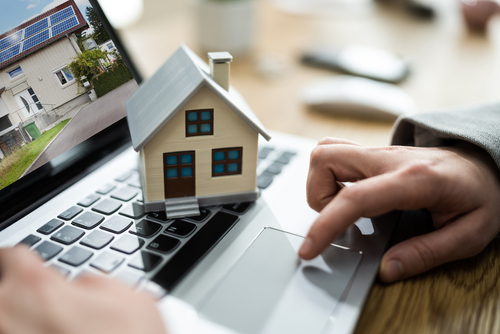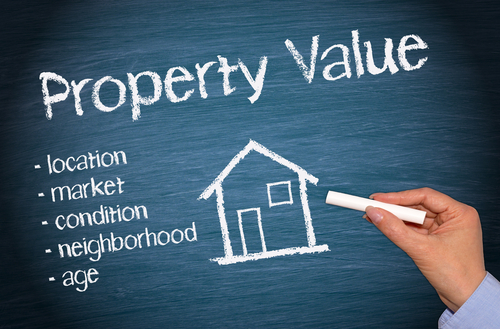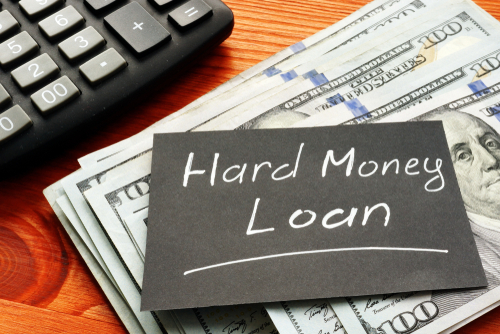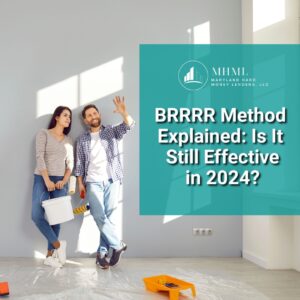How to Assess the After-Repair Value for Hard Money Loans
Fix-and-flip projects are a great investment strategy for those who want a challenge but also earn the potential for large returns. That said, part of a smart fix-and-flip investment involves assessing the property’s after-repair value. Today, we’ll go over after-repair values, why they’re important, and why it matters when you get a hard money loan.

Contents of This Article:
- What Is After-Repair Value in Real Estate?
- How to Assess the ARV of Real Estate Investments
- How is ARV Used in House Flipping?
- Why Does ARV Matter for Hard Money Loans?
- Find a Reliable Lender to Help With Your Investment
What Is After-Repair Value in Real Estate?
After-repair value (ARV) in real estate refers to the estimated value of a property after it’s undergone renovations, repairs, or improvements. Finding the ARV of a property is important for many investors, especially those involved in fix-and-flip or renovation projects. That way, if you’re getting a Maryland real estate loan, you can estimate the worth of a fixer-upper, including how much to pay for it and how much it can be sold for after repairs.
How to Assess the ARV of Real Estate Investments
Calculating the ARV of a property involves assessing the current condition of the property. You’ll want to determine what repairs or improvements are needed and estimate the potential increase in value that will result from those changes. The basis of the formula is quite simple.
- Current Value of the Property + Value Added by Renovations = After-Repair Value
For instance, if a property is valued at $200,000 and it’s estimated that renovations will add $50,000 of value, the ARV would be $250,000.
However, it’s important to note that the formula doesn’t account for several factors that are necessary to make a fully informed ARV estimate. So, if you’re looking to find the ARV for a real estate investment, you’ll want to consider the following steps.
Steps in Finding the ARV of Real Estate
- Evaluate Comparable Properties- Find recently sold properties in the same neighborhood that are similar in size, condition, and layout to the property you’re considering. You can use these as references to estimate the ARV.

- Appraise the Property- One of the most important steps in calculating the ARV of a property is getting the property appraised. After all, knowing the property’s current value gives you a better idea of what it’s worth before renovations are added.
- Consider Renovation Costs- Next, estimate the necessary renovations and improvements costs. This should include both material and labor costs, along with any associated fees like permits, inspections, etc.
- Plan for Unexpected Expenses- Plan for an emergency fund to cover unexpected expenses or changes during the project.
- Stay Updated on Market Trends- Keep track of local real estate market shifts. Changes in demand, supply, or economic conditions may impact the ARV of your property.
How is ARV Used in House Flipping?
It’s important to remember that estimating the ARV isn’t always an accurate representation of your investment property. However, when it comes to house flipping, ARV is still a helpful rule of thumb.
House flippers often use ARV to estimate the future price of a home but also to buy the home at a discounted price. After all, getting the property at a lower price can help reduce some of the risks associated with a flip. That way, if additional expenses arise during the renovation, it won’t be the difference between profit-making and losing money.
But how do house flippers know what they should offer to ensure a profit? Some use the 70% rule.
What Is the 70% Rule?
The 70% rule is a guideline commonly used by real estate investors, usually those involved in fix-and-flip projects. It provides a rough estimate of the maximum amount an investor should offer for a property, factoring in renovation expenses, holding costs, and desired profit margin. In turn, it should help them make a 30% return on their investment (ROI).
Here’s how the 70% rule works:
(ARV x 70%) – Estimated Repair Cost = Maximum Purchase Target
For instance, if your ARV is $250,000 and the cost of repairs will be around $20,000, here’s what the formula would look like.
($250,000 x 70%) – $20,000 = $155,000
Remember that the 70% rule is just a general rule of thumb and not a one-size-fits-all formula. So, you may have to adjust your numbers depending on your investment circumstances. Additionally, since you’re using an estimated ARV, the 70% rule shouldn’t always decide your final offer.
Why Does ARV Matter for Hard Money Loans?
After-repair value matters for hard money loans because it’s a key factor that lenders consider when determining whether to approve a loan and how much to lend. Some of the main reasons ARV is important for hard money loans include the following:

- Risk Assessment
- Loan Amount
- Loan-to-Value Ratio
- Collateral Value
- Exit Strategy
Risk Assessment
Hard money lenders generally base their lending decisions on the property’s value as collateral. As such, estimating the ARV helps assess the potential risk associated with the hard money loan.
Loan Amount
The maximum loan amount a borrower can receive from a hard money lender is often tied to a percentage of the ARV. After all, lenders want to ensure that they’re lending a reasonable amount relative to the expected post-renovation value of the property.
Loan-to-Value Ratio
The loan-to-value ratio (LTV) is a crucial metric in hard money lending. It represents the percentage of the property’s value that the lender is willing to finance. Hard money lenders typically use the ARV along with the current property value to calculate the LTV.
Collateral Value
For hard money lenders, the property itself is the primary collateral for the loan. As such, they want to ensure that the value of the collateral is sufficient enough to cover the loan amount in case of default.
Exit Strategy
Hard money loans are usually short-term and often used by real estate investors for fix-and-flip projects. The lender’s confidence in the ARV is crucial, as it represents the potential selling price after renovations. In turn, this is the exit strategy for the borrower.
Find a Reliable Lender to Help With Your Investment
Calculating the after-repair value of real estate investments is helpful for investors and hard money lenders. After all, investors want to know the potential of their investment property, while hard money lenders want to ensure they’re lending the right amount. If you’re looking for a reliable lender to work with for your next investment, look no further than Maryland Hard Money Lenders.
Our team of hard money professionals can help you get the funding you need for your investment property. Whether you’re looking at a fix-and-flip project, rental property investment, or need to secure bridge financing, we’ve got you covered. Contact us to learn more about our lending process, and fill out a loan application today!



